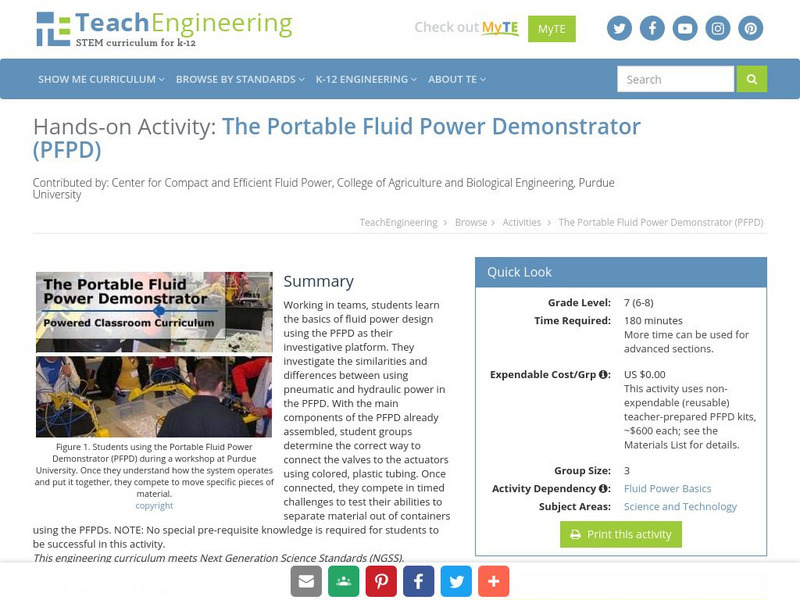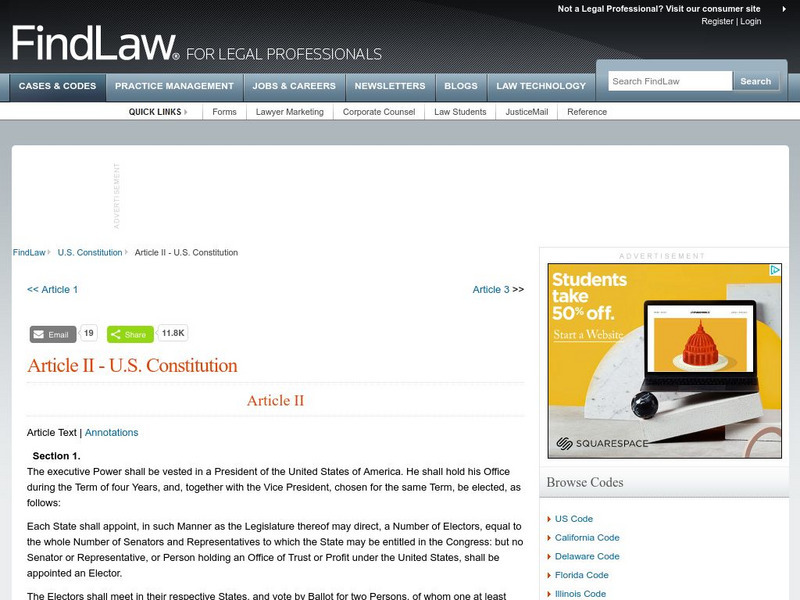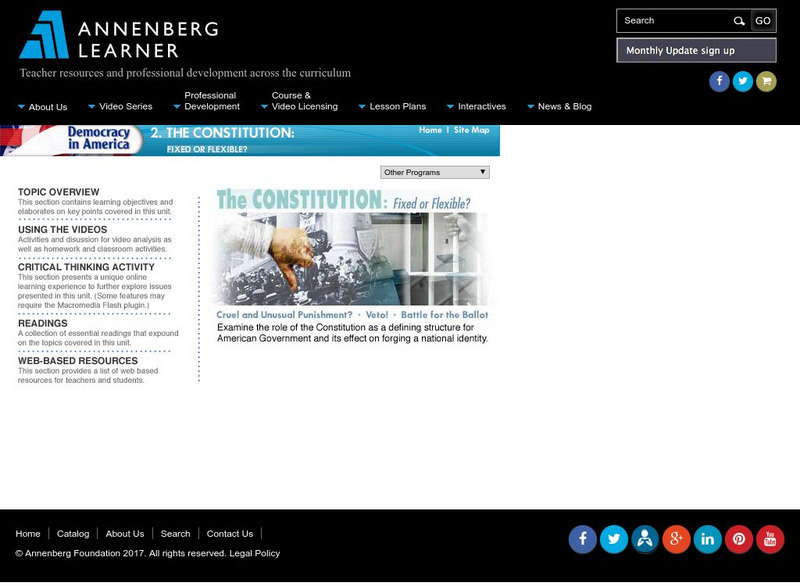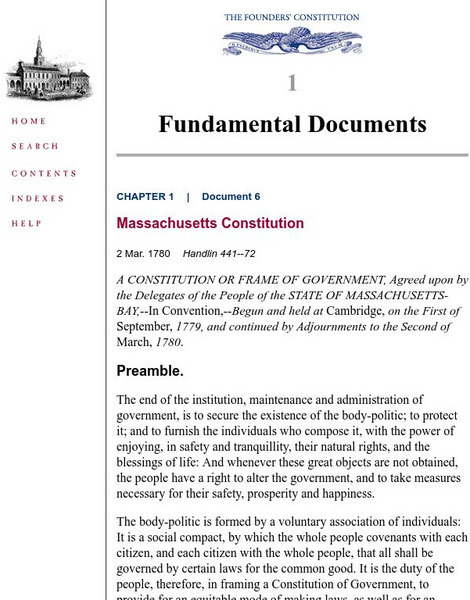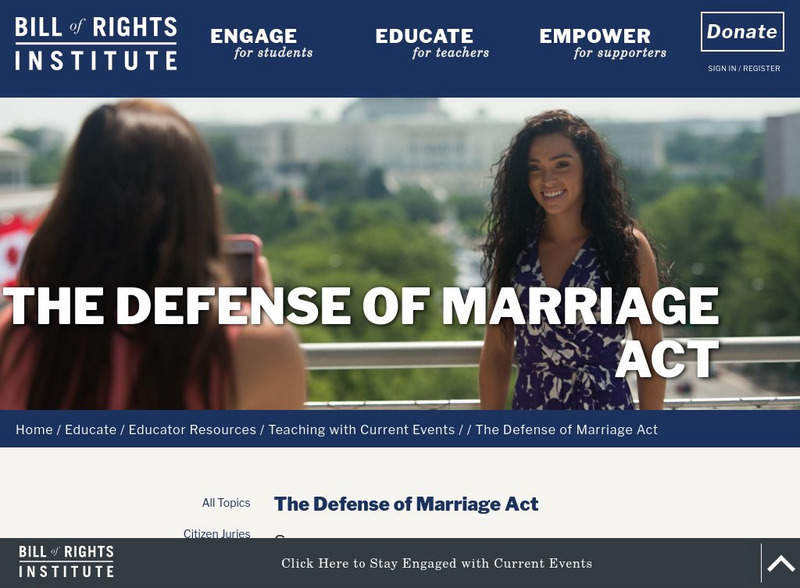University of Groningen
American History: Outlines: The Separation of Powers
Informative discussion of the ideas behind the Constitutional principle of Separation of Powers.
C3 Teachers
C3 Teachers: u.s. History Module: Did Founders Want Government to Work? [Pdf]
A comprehensive learning module on the system of government established by the founders that includes three supporting questions accompanied by formative tasks and primary source materials, followed by a summative performance task....
ClassFlow
Class Flow: Constitution
[Free Registration/Login Required] This flipchart is an in depth Activote questionnaire relating to our Constitution. Students should understand the basic concepts of the Constitution, checks and balances, separation of powers, and...
Thomson Reuters
Find Law: Article Ii: Presidential Power to Use Troops
In-depth analysis of the use of presidential power to send troops abroad without consent of Congress.
iCivics
I Civics: Games: Branches of Power
Interactive and educational game puts players in control of all three branches of government and tests their abilities to turn issues of concern into full-fledged laws.
TeachEngineering
Teach Engineering: The Portable Fluid Power Demonstrator (Pfpd)
Working as teams, students learn the basics of fluid power design using the PFPD as their investigative platform. Students will investigate the similarities and differences between using pneumatic and hydraulic power in the PFPD. While...
Cato Institute
Executive Orders and National Emergencies
The subtitle of this essay is "How Presidents Have Come to 'Run the Country' by Usurping Legislative Power." It discusses how the Constitution defines executive powers in a general way, with few limitations on the power of the President...
Energy4Me
Energy4me: Tower of Power
Students will learn that heat is needed to separate crude oil/petroleum into useable substances to make the products we use every day.
Thomson Reuters
Find Law: United States Constitution: Article Ii
Full text of Article II from the U.S. Constitution, as well as detailed annotations that explain the reasoning and subsequent impact of each clause and section of the Article. Content explores everything from the nature and scope of...
Harry S. Truman Library and Museum
Harry S. Truman Library & Museum: Three Branches of Government
Interactive teaching unit for Grades 5-8 that helps to explain the three branches of government and the the balance of power. Topics covered include balance of government, how a bill becomes a law, the amendment process, the Legislative...
Illinois Institute of Technology
Oyez: Schechter Poultry Corp. V. United States (1935)
This U.S. Supreme Court case declared the National Industrial Recovery Act (NIRA) of the New Deal illegal because of the issue of separation of powers. The 'Case Basics' links have documents and more information from the court case.
Bill of Rights Institute
Bill of Rights Institute: Constitutional Principles
James Madison knew that a key challenge of maintaining just government was framing it in such a way that the government would be forced to control itself. How does a system of separated powers-and the checks and balances built into those...
University of Groningen
American History: Outlines: The Federal Court System
Discussion of the structure, purpose, powers and Constitutional safeguards of the Federal Court System.
ClassFlow
Class Flow: Challenges Faced by the New Nation
[Free Registration/Login Required] This unit covers the content area featuring the challenges faced by the new nation including the writing of the Constitution, government powers, the Bill of Rights and the War of 1812.
Indiana University
Center on Congress: Learn About Congress
Learn about the role of the US Congress, how it works, its history, and the principles behind its creation and operation. Wonderful set of resources including FAQs, short articles and video clips, "interactive learning modules" (i.e., a...
Annenberg Foundation
Annenberg Learner: Democracy in America: The Constitution: Fixed or Flexible?
This unit explores the timeless qualities of The U.S. Constitution, the opportunities to amend it, and how it is a pillar of the American identity, through these activities, videos, and outside resources.
PBS
Pbs: How the Supreme Court Affects the Lives of Teens (Lesson Plan)
Objectives for this lesson include describing the structure and function of the Supreme Court, looking at important decisions, and discussing recent rulings and issues.
University of Chicago
The Founders' Constitution: Massachusetts Constitution: 2 March 1780
The complete, original text of the Massachusetts State Constitution as adopted in March, 1780.
US Government Publishing Office
Ben's Guide to u.s. Government: Constitution of the United States
Find background information on the Constitution of the United States of America, and learn the three basic principles upon which the Constitution was written. Additional content includes a look at the text of the Constitution, the events...
Bill of Rights Institute
Bill of Rights Institute: The Defense of Marriage Act
A lesson plan addressing what happens when Congress passes a law or an act, but the law is unconstitutional.
Bill of Rights Institute
Bill of Rights Institute: The Federal Budget and the Constitution
What responsibilities belong to the U.S. President and the Congressional houses when it comes to establishing the federal budget? Take a look at these resources and incorporate this lesson into classroom learning.
Independence Hall Association
U.s. History: Malcolm X Amd the Nation of Islam
A brief biography of a leader for black power, Malcolm X. Read about his early life and conversion to the Nation of Islam. Find out what his goals were for blacks in America, and see how the means to the end was different from Martin...
Other
Illinois State U.: Punctuation Made Simple Semicolon
What purpose does a semicolon serve in punctuation? Explore this website to learn more about this small but powerful grammar tool.
Digital History
Digital History: The Age of Constitution Writing [Pdf]
See how colonial and state constitutions differed and how the idea of a social contract between a government and its citizens is reflected in the state constitutions. The second half of this site gives an abbreviated text of the Articles...
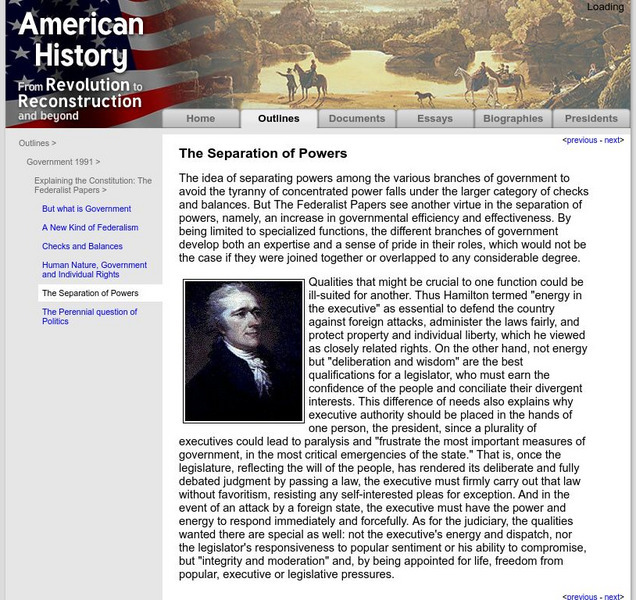
![C3 Teachers: u.s. History Module: Did Founders Want Government to Work? [Pdf] Unit Plan C3 Teachers: u.s. History Module: Did Founders Want Government to Work? [Pdf] Unit Plan](https://d15y2dacu3jp90.cloudfront.net/images/attachment_defaults/resource/large/FPO-knovation.png)



